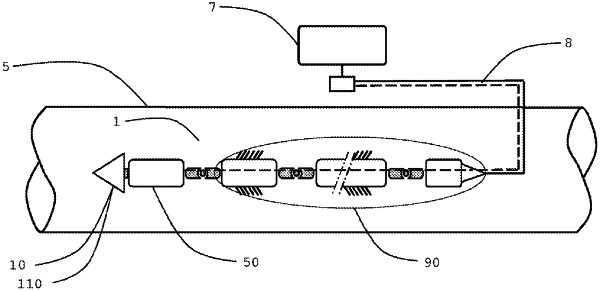| CPC B08B 9/051 (2013.01) [A46B 13/02 (2013.01); A46D 1/0207 (2013.01); B08B 13/00 (2013.01); F16L 55/32 (2013.01); F16L 55/40 (2013.01); B08B 2209/04 (2013.01); F16H 1/28 (2013.01); F16L 2101/12 (2013.01)] | 20 Claims |

|
1. An apparatus for internal cleaning of a pipeline, the apparatus comprising:
an interchangeable rotary cleaning head;
a motor device coupled to the rotary cleaning head to selectively control the rotation thereof, the motor device comprising a casing, a gearmotor accommodated within the casing and a transmission shaft, that defines an axis of rotation A, projecting from the casing;
a movement device connected to the motor device and configured to move the apparatus within the pipeline; and
a remote system for controlling the apparatus, wherein the remote system is connected to the motor device and to the movement device by a means apt to transfer electrical signals and power,
wherein the motor device is interposed between the rotary cleaning head and the movement device,
wherein the motor device comprises:
one or more metal heat-dissipator elements placed in contact with the housing of the gearmotor, wherein the casing of the motor device is filled with a diathermic and dielectric fluid; and
a pressure compensator exposed both to the pressure of the diathermic and dielectric fluid and to the pressure of fluid external to the casing;
wherein the pressure compensator is configured to balance the pressure of the diathermic and dielectric fluid, the volume of which is influenced by variations in temperature induced by the one or more metal heat dissipator elements relative to the external pressure.
|